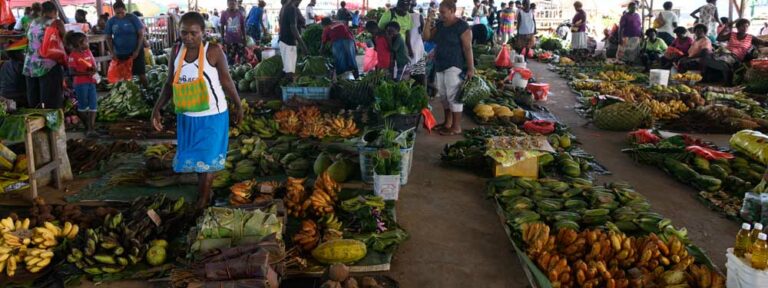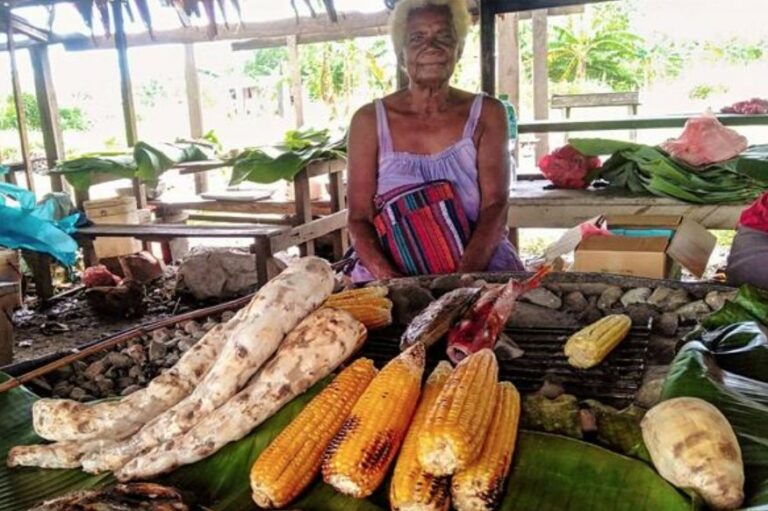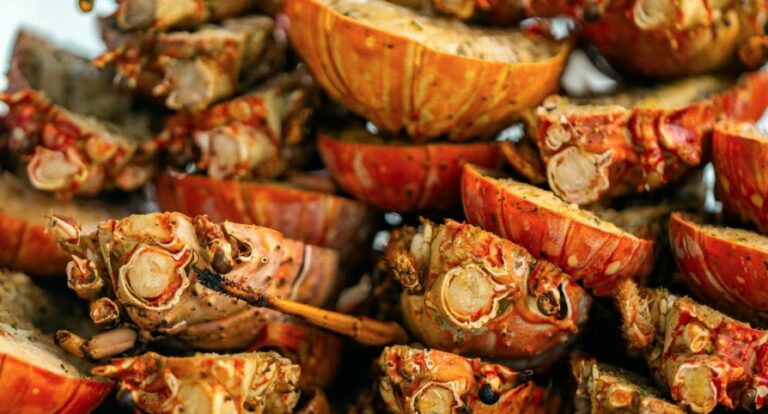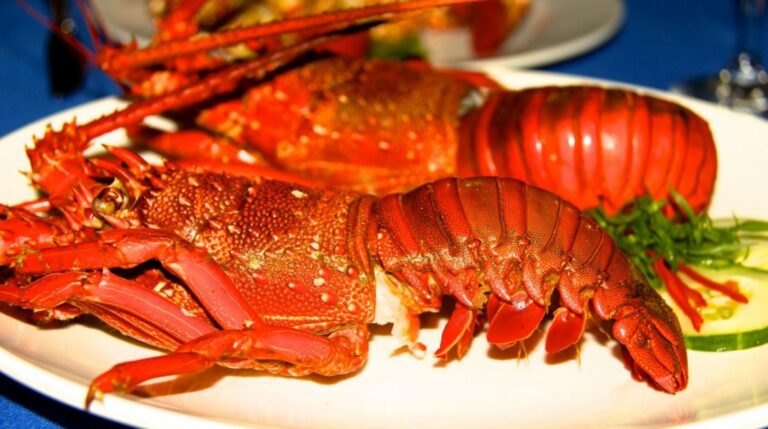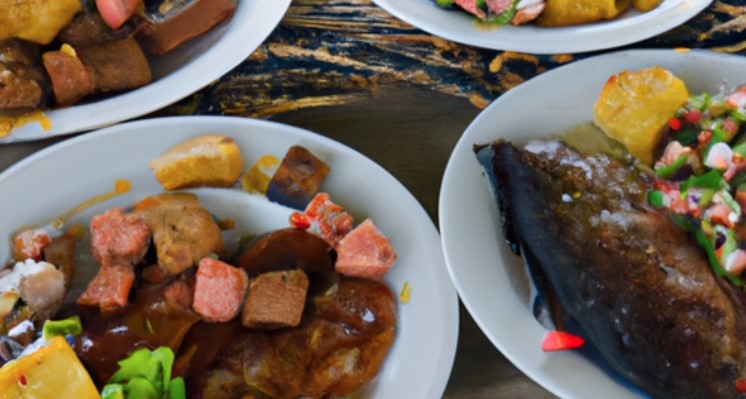Introduction: Exploring the Food Culture of Solomon Islands
Located in the South Pacific, Solomon Islands is known for its stunning natural beauty and rich culture. But did you know that the country also offers a unique culinary experience? From traditional delicacies to fresh seafood, visitors can explore the diverse food culture of Solomon Islands by visiting its many food markets and stalls.
Honiara Central Market: Where You Can Find Traditional Delicacies
Located in the heart of Honiara, the capital city of Solomon Islands, Honiara Central Market is a bustling hub of activity. Here, visitors can find a wide array of fresh produce, including tropical fruits, vegetables, and herbs. But what sets Honiara Central Market apart is its selection of traditional delicacies.
One popular item is the Solomon Islands’ national dish, the kokoda. Made from raw fish marinated in lime juice and coconut cream, it is a must-try for any foodie visiting the country. Other traditional dishes include taro, a starchy root vegetable, and cassava, a staple food made from the root of the cassava plant. Visitors can also try traditional sweets like the locally made coconut candy.
Kukum Market: The Best Place to Enjoy Fresh Seafood
Located just outside Honiara, Kukum Market is the go-to destination for seafood lovers. Here, visitors can sample a variety of fresh fish, crabs, and lobsters, all caught locally. One popular dish is the island-style fish and chips, made with locally caught fish and served with cassava chips.
Visitors can also enjoy a traditional seafood feast, known as a lagoon cook-up. This involves cooking a selection of seafood, including fish, crab, and lobster, in a large pot with coconut cream and vegetables. The result is a delicious and hearty meal that is sure to satisfy any appetite.
Kakabona Beach Bar: A Hidden Gem for Island-Style BBQ
For those looking for a more laid-back dining experience, the Kakabona Beach Bar is a hidden gem. Located on a beautiful beach just outside Honiara, this bar serves up island-style BBQ in a relaxed and friendly atmosphere.
Visitors can enjoy a variety of grilled meats, including pork, chicken, and fish, all cooked to perfection over an open flame. The bar also serves up refreshing cocktails and cold beers, making it the perfect spot to relax and unwind after a day of exploring.
The Lime Lounge: A Modern Eatery Serving Fusion Cuisine
For those looking for a more modern dining experience, The Lime Lounge in Honiara is a must-visit. This trendy eatery serves up fusion cuisine, blending traditional Solomon Islands ingredients with international flavors.
One popular dish is the Solomon Islands’ take on the classic burger, made with a locally sourced beef patty, pineapple, and a spicy chili sauce. The menu also features a selection of vegetarian and gluten-free options, making it a great choice for those with dietary restrictions.
Munda Market: A Must-Visit for Exotic Fruits and Vegetables
Located in the Western Province of Solomon Islands, Munda Market is a must-visit for those looking to sample exotic fruits and vegetables. Here, visitors can find a wide variety of tropical fruits, including mangoes, papayas, and pineapples.
Visitors can also try the locally grown kumara, a sweet potato-like vegetable, and the unique breadfruit, which can be roasted, fried, or boiled. Munda Market is a great place to explore the diverse food culture of Solomon Islands and to try new and exciting flavors.

